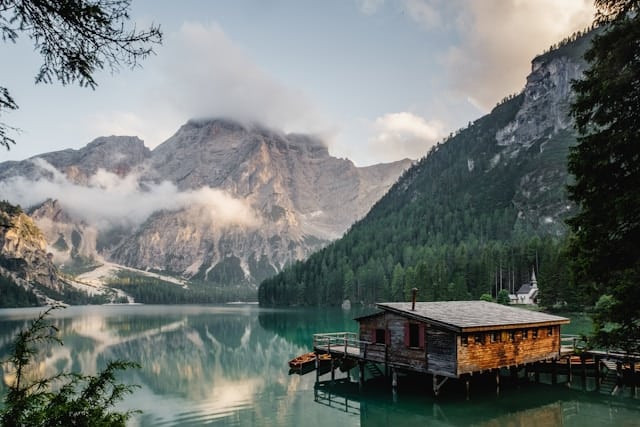In a world where drought and water shortages are becoming increasingly common, finding ways to maintain the beauty and functionality of your outdoor space is crucial. It is entirely possible to design a stunning, resilient garden that can withstand the rigors of dry seasons. This article will guide you on how to develop a drought-resistant landscape for your backyard. We will delve into understanding the role of native, water-tolerant plants, the importance of soil preparation, and furnishing your space in a way that conserves water while adding aesthetic value.
The Power of Native, Drought-Tolerant Plants
Revamping your garden starts with choosing the right plants. Native plants are those that have adapted to your local climate and soil conditions over thousands of years. These species have developed their own mechanisms to survive extended periods of drought.
Sujet a lire : What’s the Best Way to Incorporate LED Lighting in Bedrooms?
To begin with, you need to identify the plants native to your region. They will not only be drought-resistant but also will contribute to the local biodiversity. Some examples of these plants include Yarrow, Salvia, and Lavender, known for their ability to thrive in dry conditions.
Once you’ve identified suitable native plants, consider your landscape design. Arrange your plants in a way that maximizes their growth potential and aesthetic appeal. For instance, group plants with similar water requirements together. This practice, known as hydrozoning, can significantly reduce your garden’s overall water consumption.
Avez-vous vu cela : How to Build a Simple and Attractive DIY Patio Bench?
Soil Preparation and Water Conservation
The state of your garden soil is a key factor in creating a drought-resistant landscape. Understanding and working with your soil type will help your plants to flourish, even in dry conditions.
Start by determining your soil type. Sandy soils, for instance, drain quickly and can be improved by adding organic matter, like compost or manure, to retain more water. Clay soils, on the other hand, retain a lot of water and may need amendments like coarse sand or gypsum to improve their drainage.
Moreover, consider using a layer of mulch on the soil surface. Mulch can dramatically reduce evaporation, keep the plant roots cool, and inhibit weed growth that competes for water.
Implementing rainwater harvesting systems can also be a game-changer. This could be as simple as installing rain barrels to capture water from your roof or as elaborate as creating a rain garden to direct and absorb runoff.
Landscaping Ideas for a Drought-Resistant Yard
Besides plants and soil, another significant aspect of creating a drought-resistant landscape is your yard design. Thoughtful landscaping ideas can contribute to water conservation while creating a visually appealing outdoor space.
Incorporate hardscaping elements like stones, pebbles, or gravel into your landscape. These materials do not require watering and can add texture and color to your yard.
Creating a rock garden or a dry creek bed, which can channel runoff water during rare rainfall events, is another excellent landscaping idea. These features can be aesthetically pleasing and serve practical water-saving purposes.
Choosing Outdoor Furniture and Lighting
The final touch to your drought-resistant landscape is the selection of outdoor furniture and lighting. Choose pieces that match the overall aesthetic of your drought-resistant design and also contribute to water conservation.
Opt for furniture made from materials that are resistant to the elements, especially sunlight and heat. Teak, eucalyptus, and metal are some great options. Ensure the furniture is placed appropriately to not hinder the growth and watering of your plants.
As for the lighting, consider solar-powered lights. Aside from saving energy, they can provide a beautifully lit landscape without the need for extensive, water-guzzling wiring systems. Outdoor lighting also enhances the visibility of your water-wise plantings and hardscape designs, enabling you to enjoy your garden even after sundown.
Creating a drought-resistant landscape in your backyard might seem like a challenge, but with the right planning and choices, it can be a fulfilling project. By combining native plants, suitable soil, smart landscaping ideas, and outdoor furniture, you will have a yard that’s resilient, beautiful, and, importantly, water-wise. Remember, every drop of water saved contributes to a sustainable future for all.
The Utility of Kitchen Dining and Bathroom Vanity Spaces
When designing your drought-resistant landscape, don’t overlook the potential of incorporating your kitchen dining and bathroom vanity spaces into the layout. These areas can serve dual purposes – enhancing the overall aesthetic of your outdoor space and contributing to water conservation.
Consider setting up an outdoor kitchen dining space, where you can enjoy meals with family and friends in the embrace of your lush, drought-tolerant garden. Select furniture that complements the natural surroundings and matches the aesthetic of your landscape design. Opt for furniture made from weather-resistant materials such as teak, eucalyptus, or metal to ensure longevity.
Moreover, it’s essential to position your outdoor dining area strategically to maximize the use of natural shade provided by your drought-tolerant plants. This not only makes the space more comfortable but also reduces the need for water-intensive cooling solutions.
As for the bathroom vanity area, consider using graywater systems. These systems reuse water from your sinks, showers, and washing machines for irrigation, ensuring nothing goes to waste. This, in turn, reduces the amount of fresh water your garden consumes and makes your landscape more sustainable.
If you have a pool or a hot tub, incorporate them into your landscape design. Utilize pool covers to reduce water evaporation and consider using solar-powered heating systems to save energy.
The Role of Front Yard and Outdoor Lighting in Drought-Resistant Landscaping
Your front yard plays a significant part in your home’s curb appeal, and it’s no different when it comes to drought-resistant landscaping. With careful planning and design, your front yard can be as water-efficient and eye-catching as your backyard.
Start by replacing traditional lawns with native plants that require less water. This also lends a unique aesthetic to your front yard and contributes to local biodiversity.
In addition, hardscape elements like rocks, pebbles, and gravel can add visual interest to your front yard. They can also function as pathways that reduce soil erosion during the rare rainfall events.
Now, onto outdoor lighting. Proper lighting can highlight the beauty of your drought-tolerant landscape design, adding depth and sophistication to the overall look. Opt for solar-powered lights to illuminate pathways, accentuate plants, and create a welcoming ambiance without consuming extra water or electricity.
Advancements in solar technology have led to a variety of outdoor lighting options. From stake lights that can be easily inserted into the ground to wall-mounted lights for your house exterior – there’s something to meet every lighting need.
Conclusion: Creating a Water-Wise, Drought-Resistant Landscape
Creating a drought-resistant and water-wise landscape is not just about survival. It’s about building a sustainable, aesthetically pleasing outdoor space that respects and supports the environment. From the selection of native plants and soil preparation to smart landscaping design, every decision you make plays a crucial role in conserving water while beautifying your yard.
Remember to incorporate elements like outdoor dining and bathroom vanity spaces that contribute to water conservation. Also, don’t forget the role your front yard and outdoor lighting play in creating an appealing and sustainable landscape.
Finally, engage in eco-friendly practices such as rainwater harvesting and graywater reuse. These methods contribute to water conservation, a key aspect of drought-resistant landscaping.
By following these guidelines, you can create an outdoor oasis that not only withstands dry seasons but also contributes to a sustainable future for all. With the right planning, your garden can be a testament to beautiful, resilient, and responsible landscaping.










